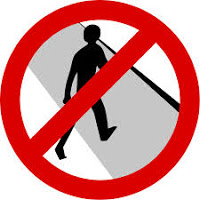Rules are set wherever we go. There are rules inside the classroom, in the marketplace, parks, recreational places, malls, movie theaters, hospitals, at home, and even on the roads. We are obliged to abide and follow even if sometimes we don’t want to. It is to maintain order and peace and to protect our lives. If we disobey, we may be in danger, fined, or detained as a consequence.
Road or street rules are crucial to drivers and all people who walk and cross the street every day. Without these rules, many accidents can happen and put lives at risk. For drivers, taking extra precautions, especially in observing the speed limit, proper turns, and strictly following the traffic lights, is imperative to arrive safely. For those people walking and crossing the road, it is also needed to be watchful and observe some rules to avoid road distractions and cause chaos and accidents.
Jaywalking is one of the most violated pedestrian traffic rules, and often people cross the street illegally. It might be considered a low-level offense, but it can draw fines in most jurisdictions. You will be an offender of the jaywalking law in a place that imposes to cross a street using the designated regular crossing to avoid accidents and traffic jams of the vehicles.
The term jaywalking appears initially at Kansas, or at least that is where the first written evidence was seen. But it was different when it was first used. It was an imitation of a slightly older word, “jay driver,” referring to a driver of horse-drawn carriages or automobiles who refused to follow traffic rules and often drove on the wrong side of the road.
On June 28, 1905, an article in the Junction City Union (Kansas) started stating that “Nearly every day someone calls our attention to articles that have been appearing in The Kansas City Star concerning ‘The Jay Driver'” and followed by the warnings against the offenders.
The Oxford English Dictionary stated that the term jaywalking/jaywalker’s first known use was in June 1917 edition of Harper’s Magazine. The first actual reference was from a 1909 Chicago Tribune, mentioning that some bitter chauffeurs would harm nobody if there were not so many jaywalking.
The New York Times 1915 issue also found out the term “jaywalking,” “highly shocking,” and “truly opprobrious” (shameful) about the way it was used. The term has some sort of racial slur and more of a derogatory term by the wealthy people to the more inferior class. Automobile companies popularized it to their various anti-pedestrian campaigns. For instance, the Yellow cab president, John Hertz, said that they fear the jaywalkers, native of Chicago, as they are worse than the anarchist.
This was an effective strategy to counter the automobile interests trying to get pedestrians off the road. Those who drive cars seem to like to have driven the “jay drivers” away because, in the end, the automobile companies won the fight for the use of roads.
However, the safety concern regarding the factor of crosswalks or jaywalkers is not entirely valid. Recent studies suggest that pedestrians are about 28% less likely to be hurt while crossing the street if they jaywalk than using a crosswalk without any signals like traffic lights. It is thought to be the cause because jaywalkers tend to be more cautious when crossing the road than passing through the crosswalks.
According to the United States Department of Transportation, in 2017, averagely, a pedestrian is killed every 88 minutes in traffic crashes, and this number increased more than three percent in 2018, totaling to 6,283 deaths — the most fatalities since 1990. This has led the National Highway Traffic Safety Administration (NHTSA) to raise awareness of pedestrians’ dangers by providing safety tips, educational material, and other resources.
Both parties should be responsible road users. Whether you are a car driver, or a jaywalker, road rules and signs should be at the top of your thought to avoid dangers and fatality. There is no way to be a reckless, irresponsible citizen because lives are at risk, and no amount of fine can compensate if it is lost.

